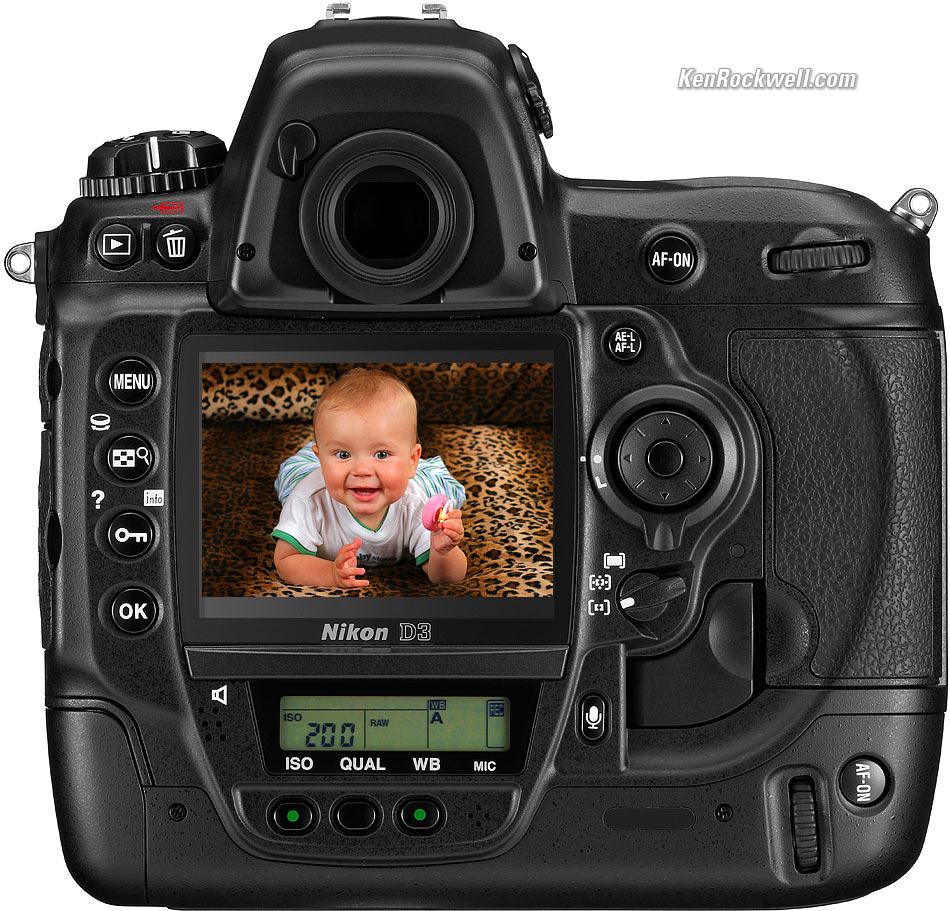
Thank you Ken Rockwell for your contribution to this blog :)
Shot all day with the D800 yesterday.
After configuring the camera to my preferences the first thing that I noticed when reaching back for the D3 was that the screen size on the D800 was slightly bigger. Noticeable? No. But when I switched back to the D3, the screen seemed smaller.
Settings and interface mostly the same. Nothing to write home about. The camera felt a little plastic to me though. It certainly wasn't as heavy as I thought it would have weighed. Not sure why. Felt consumerish and not pro. Mounting some of my non internal focus lenses made the whole unit sound loud and rickety. I suppose that's the difference on a pro body.
The missing vertical grip killed me. I never thought I would "need" the vertical grip. I was wrong. Furthermore the missing LCD *on* the vertical grip with the WB info and the ISO information was very unpleasant. There are buttons there too. If you aren't familiar with the backside of the D3 take a look above. Not being able to see immediately the format and the configuration of the dual card slots was annoying too.
Speaking of dual card slots, they write at different speeds (particularly when the cards are set to write different formats and the cards have different speed ratings). You pop in 2 cards and make them write stuff simultaneously and you're waiting for BOTH cards to finish writing once you run out of buffer. Sure, one is faster than the other. But you're waiting on the slower one to finish writing (usually the SD card) before you can shoot again. That makes for an annoyance if you want to shoot faster. Get rid of 1 card or don't write to both or get a uber faster SD card.
It was nice to have Nikon build in that D3-type redundancy into the D800 though. That's definitely a pro feature.
Other than that, the camera mostly shot like a D3. I miss the zoom-in/zoom-out configuration of the D3 (button + scroll wheel) because it's faster. I find pushing a button repeatedly really clunky and slow. But that might be the case with the D4 too, not sure. Overall a very nice camera with no battery life issues to complain of. It's a tool that basically gets out of your way so you can do your thing.
And that's exactly what a good camera does.
Now for the really bad news. Granted I'm loading these images onto my Media Server which is a FireWire 800 RAID 5 4-disk array via Lightroom, the import process is painfully slow. Yeah, it's supposed to be slow if you load onto a traditional drive/array. So why am I not loading onto my SSD? Because my SSD is full of other stuff I'm working on (I'm behind on edits). And why am I not using CaptureOne? No clear advantage if you have to wait 1-2 seconds to render your images for the first time. But clearly I should be importing to the fastest working drive possible. I just need to clear some stuff out before I have enough space for the 100GB of working files from this shoot!
And the reality is that infrastructure needs to be updated and improved regularly. That is one of the functions of a photographer. You work with technology and tools that quickly becomes obsolete. My computer is now 3 years old. The drives are filling up quickly. If I were to upgrade to the D800 (don't worry I won't), it would completely "break" my current system.
Thankfully I have no continuous need for 36MP. The trusty 12MP D3 is still my go-to-camera and well complemented by the NEX-7 whose files are large enough. Until system speeds (RAM, CPU, disk, throughput) become dramatically faster at a lower cost, it's apparent that many of these high megapixel monsters are overkill for "normal" usage. And from a professional perspective I don't even know what hobbyists are doing running around with D800's! It's not the best camera for shooting your kids, your pets, your food blog... And beyond the physical infrastructure, even the algorithms in Lr and C1 and DXO have to be rewritten to accommodate optimization for larger files.
Is more megapixels the way of the future? Sure. But right now I think we've hit a temporary ceiling where many other limitations need to be resolved before the megapixel race can take off again. I think ISO performance, better RAW converter algorithms, dynamic range, etc. are far more important (now) than getting to 45MP on a 35mm DSLR sensor.
But if you're itching for the next 60MP and 80MP PhaseOne cameras click here :)

So great to hear an honest professional assessment of the D800 and current requirements. Sure, newer is generally always better - but that doesn't mean one has to always buy the latest thing. It's great to know working pros are not as susceptible to the gear acquisition syndrome as some hobbyists I know.
ReplyDelete